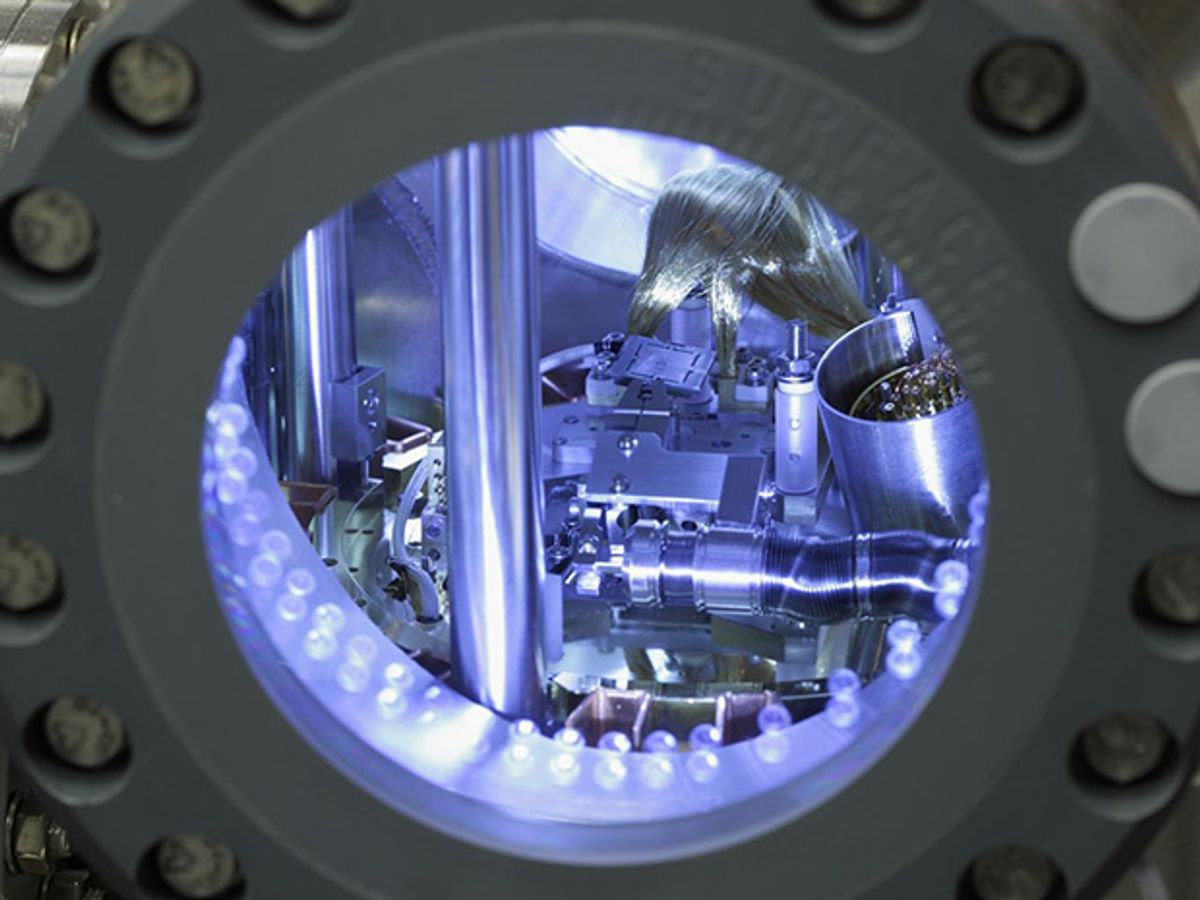What’s going to replace flash? The R&D arms of several companies including Hewlett Packard, Intel, and Samsung think the answer might be memristors (also called resistive RAM, ReRAM, or RRAM). These devices have a chance at unseating the non-volatile memory champion because, they use little energy, are very fast, and retain data without requiring power. However, new research indicates that they don’t work in quite the way we thought they do.
The fundamental mechanism at the heart of how a memristor works is something called an "imperfect point contact," which was predicted in 1971, long before anybody had built working devices. When voltage is applied to a memristor cell, it reduces the resistance across the device. This change in resistance can be read out by applying another, smaller voltage. By inverting the voltage, the resistance of the device is returned to its initial value, that is, the stored information is erased.
Over the last decade researchers have produced two commercially promising types of memristors: electrochemical metallization memory (ECM) cells, and valence change mechanism memory (VCM) cells.
In EMC cells, which have a copper electrode (called the active electrode), the copper atoms are oxidized—stripped of an electron—by the “write” voltage. The resulting copper ions migrate through a solid electrolyte towards a platinum electrode. When they reach the platinum they get an electron back. Other copper ions arrive and pile on, eventually forming a pure metallic filament linking both electrodes, thus lowering of the resistance of the device.
In VCM cells, both negatively charged oxygen ions and positively charged metal ions result from the “write” voltage. Theoretically, the oxygen ions are taken out of the solid electrolyte, contributing to a filament consisting of semiconducting material that builds up between the electrodes.
Now international research teams lead by Ilia Valov at the Peter Grünberg Institute in Jülich, Germany, report in Nature Nanotechnology and Advanced Materials that they have identified new processes that erase many of the differences between EMC and VCM cells.
Valov and coworkers in Germany, Japan, Korea, Greece, and the United States started investigating memristors that had a tantalum oxide electrolyte and an active tantalum electrode. "Our studies show that these two types of switching mechanisms in fact can be bridged, and we don't have a purely oxygen type of switching as was believed, but that also positive [metal] ions, originating from the active electrode, are mobile,” explains Valov.
“In VCM memristors it was known that the mobile species are oxygen ions (negatively charged) and oxygen vacancies ( positively charged). Both oxygen ions and vacancies are coupled,” he says. “The oxygen ions used the vacancies to move forward.” So Valov’s team set out to verify whether the metal ions were also mobile. One approach started with thin layer of tantalum oxide deposited on a tantalum substrate. The scientists used a scanning tunneling microscope tip (STM) to create a filament on the oxide that mimics the behavior inside a real tantalum memristor. "We applied a voltage to the STM tip and we observed the formation of a small metallic filament in the vacuum gap” between the film and the microscope probe’s tip, he says. “This metallic filament can only be generated if the [positive tantalum ions] are mobile.”
In another experiment the researchers placed in a memristor cell a layer of amorphous carbon that blocks the oxygen ions from moving between the tantalum electrode and the tantalum oxide electrolyte.
With this modified interface the researchers found the electrical characteristics of metallic conducting materials—just what you’d expect from classical ECM cells, says Valov. After submitting the research to Nature Nanotechnology, he adds, they have performed similar experiments where the amorphous carbon was replaced with graphene, which also blocks oxygen ions. Future experiments will include layers of different materials and different thicknesses of the electrolyte to see how they react to these membranes. This research will be needed to study the effect of mobile metal cations and their possible control in VCM memristors. A better and detailed understanding of all the mechanisms involved usually leads to better devices, concludes Valov.



